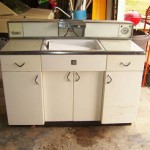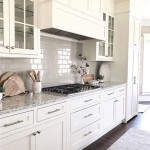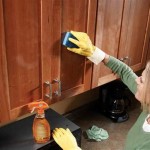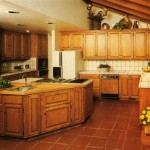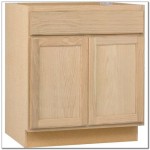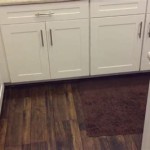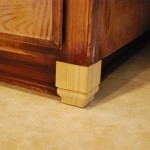Red Distressed Kitchen Cabinets: A Comprehensive Guide
Red distressed kitchen cabinets represent a bold and distinctive design choice, infusing a kitchen with character, warmth, and a touch of vintage charm. This style combines the vibrancy of red with the aged, weathered look of distressing, creating a focal point that can transform the entire space. The popularity of this design stems from its ability to blend seamlessly with various kitchen styles, from rustic farmhouse to modern eclectic. Understanding the nuances of red distressed cabinets, including material choices, distressing techniques, hardware selection, and complementary design elements, is crucial for achieving a cohesive and aesthetically pleasing kitchen.
Choosing red distressed kitchen cabinets is more than just a superficial aesthetic decision; it is an investment in the overall ambiance and functionality of the kitchen. The color red, often associated with energy, passion, and excitement, adds a dynamic element to the room. When paired with distressing, which simulates the effects of age and use, the cabinets gain a sense of history and authenticity. This combination can create a welcoming and comfortable atmosphere, making the kitchen a more inviting space for cooking, dining, and gathering.
The selection of materials for red distressed kitchen cabinets is a foundational step in the design process. Different materials offer varying levels of durability, aesthetic appeal, and suitability for distressing techniques. A careful evaluation of these factors is essential to ensure the longevity and visual impact of the cabinets.
Material Selection for Red Distressed Cabinets
Several materials are commonly used in the construction of kitchen cabinets designed for a distressed aesthetic. Solid wood, particularly hardwoods like maple, oak, and cherry, is a popular choice due to its durability, workability, and natural grain patterns. These wood types accept paint and distressing techniques well, resulting in a high-quality, long-lasting finish. Softwoods like pine are also used, although they are more prone to dents and scratches, which can contribute to the distressed look but may also require more maintenance.
MDF (Medium-Density Fiberboard) is another option, especially for cabinet doors and drawer fronts. MDF provides a smooth, stable surface that is less susceptible to warping or cracking than solid wood. It is also generally more cost-effective. However, MDF may not be as durable as solid wood and may not accept intricate distressing techniques as well.
Plywood, especially cabinet-grade plywood, offers a balance of strength, stability, and affordability. It is often used for cabinet boxes and sides, providing a solid foundation for the rest of the cabinet structure. Plywood can be painted and distressed to varying degrees, depending on the veneer and construction.
The choice of material significantly influences the overall look and feel of the red distressed cabinets. For example, solid wood cabinets with pronounced grain offer a more rustic and natural appearance, while MDF cabinets provide a smoother, more uniform surface. The selected material should align with the desired aesthetic and the intended level of distressing.
Distressing Techniques and Finishes
Distressing techniques are the key to achieving the aged, weathered look that defines red distressed kitchen cabinets. These techniques involve intentionally creating imperfections and wear marks on the cabinet surfaces, simulating the effects of time and use. Various methods can be employed, each producing a unique and distinctive result.
One common technique is sanding. Sanding involves selectively removing paint or stain from the edges, corners, and raised areas of the cabinets to reveal the underlying wood or primer. This creates a worn and aged appearance, highlighting the texture and contours of the cabinet. Different grades of sandpaper can be used to achieve varying levels of distress, from subtle wear to more pronounced damage.
Another technique is glazing. A glaze is a thin, semi-transparent coating that is applied over the painted or stained surface of the cabinet. The glaze settles into the crevices and details of the cabinet, accentuating the texture and adding depth and dimension. Glazes are often applied in contrasting colors to create a more dramatic effect, such as a dark glaze over a red painted surface.
Chipping and crackling are techniques that simulate the effects of aging paint. Chipping involves intentionally removing small pieces of paint from the cabinet surface, creating a rough and weathered appearance. Crackling involves applying a special crackle medium that causes the paint to crack and craze as it dries, revealing the underlying surface. These techniques add a significant amount of character and visual interest to the cabinets.
Dry brushing is a technique where a brush with very little paint on it is lightly dragged across the surface of the cabinet. This creates a subtle, textured effect that can highlight the grain of the wood and add a sense of depth. Dry brushing is often used in combination with other distressing techniques to create a more nuanced and complex finish.
Hardware selection also plays a crucial role in enhancing the distressed look. Antique brass, oil-rubbed bronze, and wrought iron hardware are popular choices that complement the aged and rustic aesthetic. The hardware should be carefully chosen to match the style and color of the cabinets, adding a cohesive and visually appealing finishing touch.
Complementary Design Elements and Color Palette
Red distressed kitchen cabinets are a strong design statement, and the surrounding elements of the kitchen should be carefully chosen to complement and enhance their aesthetic. The color palette, countertops, backsplash, flooring, and lighting all contribute to the overall cohesiveness and visual appeal of the space.
A complementary color palette can help balance the boldness of the red cabinets and create a harmonious and inviting atmosphere. Neutral colors such as white, cream, beige, and gray are excellent choices for walls and countertops. These colors provide a calming backdrop that allows the red cabinets to stand out without overwhelming the space. Accents of black, bronze, or copper can add depth and sophistication to the color scheme.
Countertops play a significant role in the overall design. Natural stone countertops, such as granite, marble, and soapstone, offer a timeless and elegant look that complements the distressed cabinets. Wood countertops, particularly butcher block, add warmth and rustic charm. Concrete countertops provide a modern and industrial contrast. The color and texture of the countertops should be carefully considered to create a cohesive and visually appealing look.
The backsplash is another opportunity to add visual interest and texture to the kitchen. Subway tiles, especially in white or cream, are a classic choice that complements the red cabinets. Patterned tiles, such as geometric or floral designs, can add a touch of personality and character. Stone or brick backsplashes can enhance the rustic and vintage feel of the kitchen. The backsplash should be chosen to complement the countertops and cabinets, creating a unified and harmonious design.
Flooring options should also be carefully considered. Hardwood floors, especially in lighter or medium tones, add warmth and natural beauty to the kitchen. Tile floors, such as ceramic or porcelain, are durable and easy to maintain. Stone floors, such as slate or travertine, provide a rustic and textured look. The flooring should be chosen to complement the cabinets and countertops, creating a cohesive and visually appealing foundation for the kitchen.
Lighting plays a crucial role in highlighting the beauty of the red distressed cabinets and creating a welcoming atmosphere. Pendant lights over the island or peninsula can add a focal point and provide task lighting. Recessed lighting provides ambient light throughout the kitchen. Under-cabinet lighting illuminates the countertops and backsplash, enhancing their texture and color. The lighting should be chosen to complement the overall design of the kitchen and create a functional and aesthetically pleasing space.
In conclusion, red distressed kitchen cabinets offer a unique and compelling design option for homeowners seeking to add character, warmth, and a touch of vintage charm to their kitchens. By carefully considering the material selection, distressing techniques, hardware selection, and complementary design elements, it is possible to create a kitchen that is both aesthetically pleasing and functionally efficient. The integration of these elements requires careful planning and attention to detail, but the resulting kitchen space will be a reflection of personal style and a testament to the power of thoughtful design.

Distressed Kitchen Cabinets Painting Cabinet Styles

Rustic Painted Kitchen Cabinets Google Search Farmhouse Style Red

Pin On Kitchens

8 Barn Red Kitchen Cabinets Ideas Redo

Red Distressed Kitchen Cabinets Rustic Other By Northshore Wood S Inc Houzz
:max_bytes(150000):strip_icc()/cottage_kitchen_3-5b5500d9c9e77c001acf0430.jpg?strip=all)
16 Inspiring Ways To Use Red In The Kitchen

Good Cabinet Color Distressed Kitchen Cabinets Red Decor

Red Kitchen Cabinets Sebring Design Build Remodeling

Red Distressed Kitchen Cabinets Rustic Other By Northshore Wood S Inc Houzz

Red Distressed Kitchen Cabinets Rustic Other By Northshore Wood S Inc Houzz
Related Posts

